In an attempt to squeeze every last drop out of summer, this week’s Listed section features Wine Lister’s top 5 rosés by Quality score. Whilst the Côte d’Azur might seem a long way away, these five Provençal wines serve as a reminder of warmer climes and long sunny days.
Wine Lister’s Quality score measures a wine’s performance across two criteria – critics’ scores and ageing potential. Whilst these wines perform relatively well with the critics, they are not built with longevity in mind, and have an average predicted drinking window of just three years – compared to 17 and 16 years respectively for the top five whites and reds for Quality.
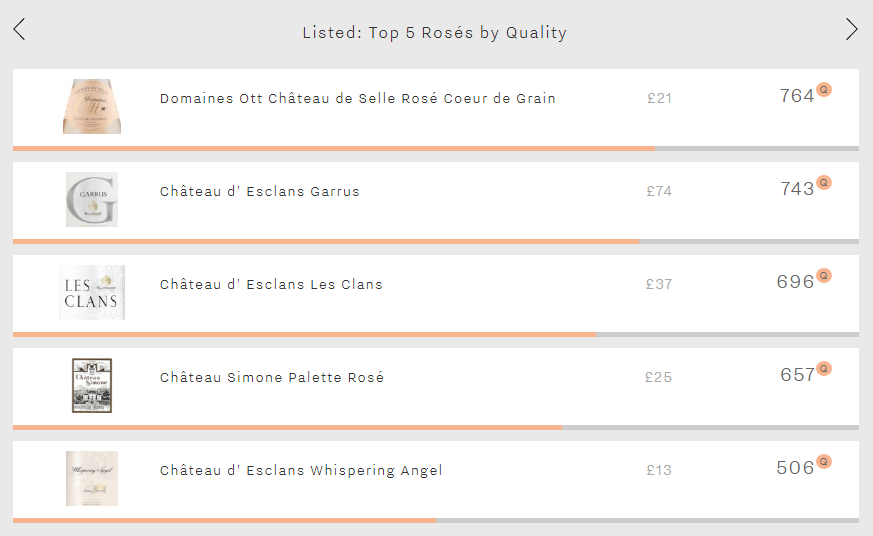
Domaines Ott Château de Selle Rosé Coeur de Grain tops the table with a very strong Quality score of 764. Currently priced at around £21 per bottle (depending on the retailer), it is the second-cheapest of the five, and represents excellent value for money.
Garrus, the first of three wines from Château d’Esclans, comes next with a Quality score of 743. At £74 it is by far the most expensive of the group – over twice as expensive as is its close relative Les Clans, with a Quality score of 696. Both these wines divide the critics, performing well with Antonio Galloni and Jancis Robinson, but less favoured by Bettane+Desseauve.
In fact, the French duo are considerably less enamoured with these five rosés than Jancis Robinson in general. Perhaps still rosé has a way to go before it is considered a serious vinous offering in France.
Château Simone Palette Rosé fills the fourth spot with a score of 657, followed by a third wine from Château d’ Esclans – Whispering Angel. Whilst it has a modest Quality score of 506, and is by far the least expensive of the group, it has by far the best Brand score (805). Proof that formidable branding can propel a wine beyond where its intrinsic quality level might suggest (though we certainly wouldn’t turn our noses up at a chilled glass of Whispering Angel on a sunny day like today).
Analysis of Palmer 2006, which has released a tranche this morning at €215 ex-négociant, up 72% on the initial 2007 en primeur release price (€125):
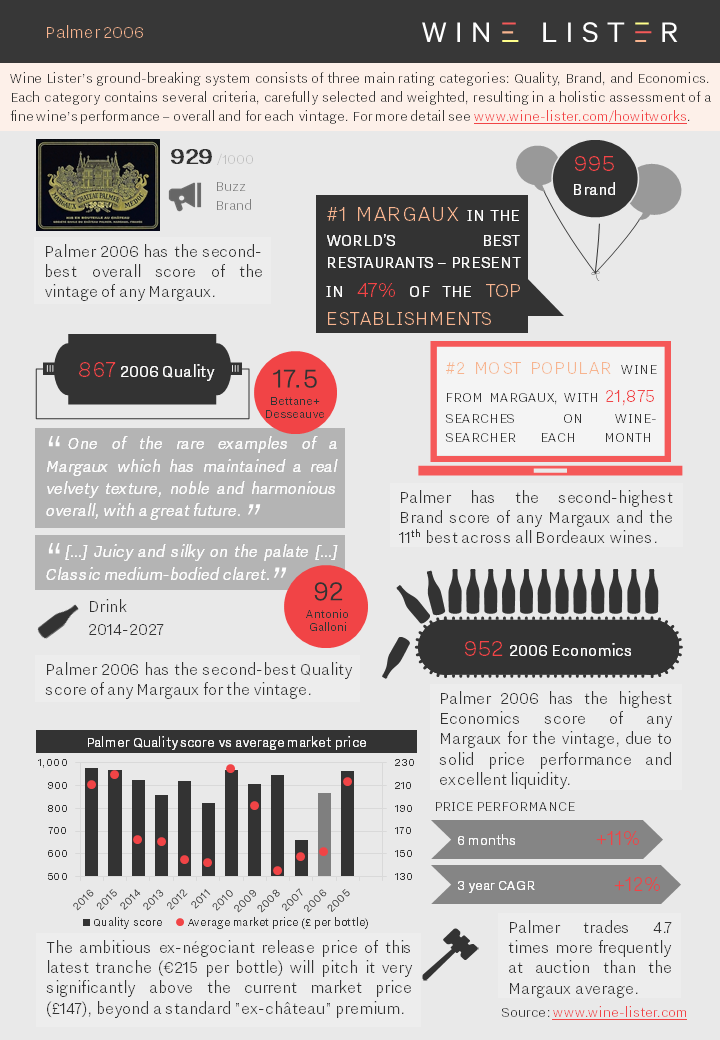
You can download the slide here: Wine Lister Fact Sheet Palmer 2006
Champagne continues to find itself a popular tipple amongst summer drinkers, the latest Wine Searcher data shows. Each month we look at the last three months’ worth of search data, measured against the previous period, to see which wines have grown most in popularity. Last month’s data featured two Champagnes in the top five, and this month’s – looking at data from June to August – features three.
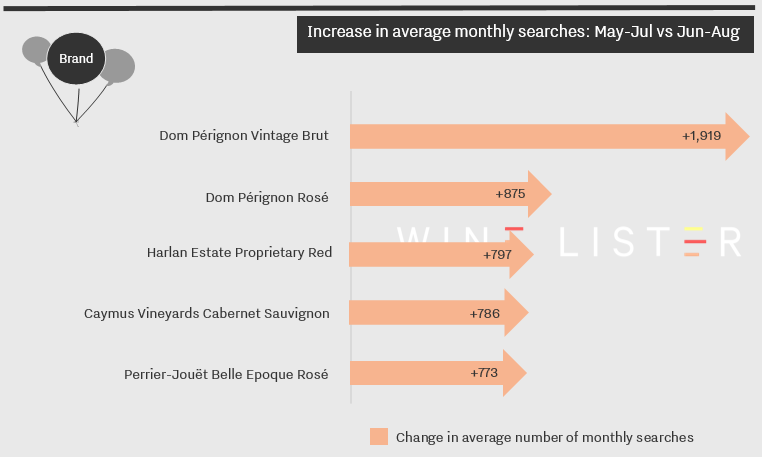
For the second month in a row, Dom Pérignon Vintage Brut finds itself in first place, with an increase of 1,919 searches taking the wine to an impressive 57,000 searches on average per month. This also makes it the fifth most searched-for wine on Wine Searcher from June to August, beaten only by Bordeaux heavyweights Lafite, Mouton, Margaux, and Petrus.
The producer’s Rosé takes the second spot, although with 9,300 searches on average per month it falls some way behind the dizzy popularity of its sibling. Proving the unquenchable appeal of drinking pink Champagne in the sun, Perrier-Jouët Belle Epoque Rosé makes up this month’s trio. Starting from the lowest number of average searches of the five wines, at around 1,600 per month, it jumps to 2,300 searches with the latest data update.
The breadth of regions has narrowed this month, with the remaining two wines both Cabernet-based and hailing from Napa: Harlan Estate Proprietary Red and Caymus Vineyards Cabernet Sauvignon. The former is one of the region’s biggest names, a self-proclaimed “First Growth” of California, costing on average £665 per bottle. Caymus Vineyards, meanwhile, averages £100 a bottle but is a favourite amongst consumers, and with an overall score of 747/1,000 shows that high quality doesn’t always come with a high price to match.
Champagne and Californian Cabernets: the drinks of the summer. You heard it here first.
Analysis of Fargues 2014, which was released recently at €120 ex-négociant, the same as the 2013 release price, with a Wine Lister Quality score of 874:
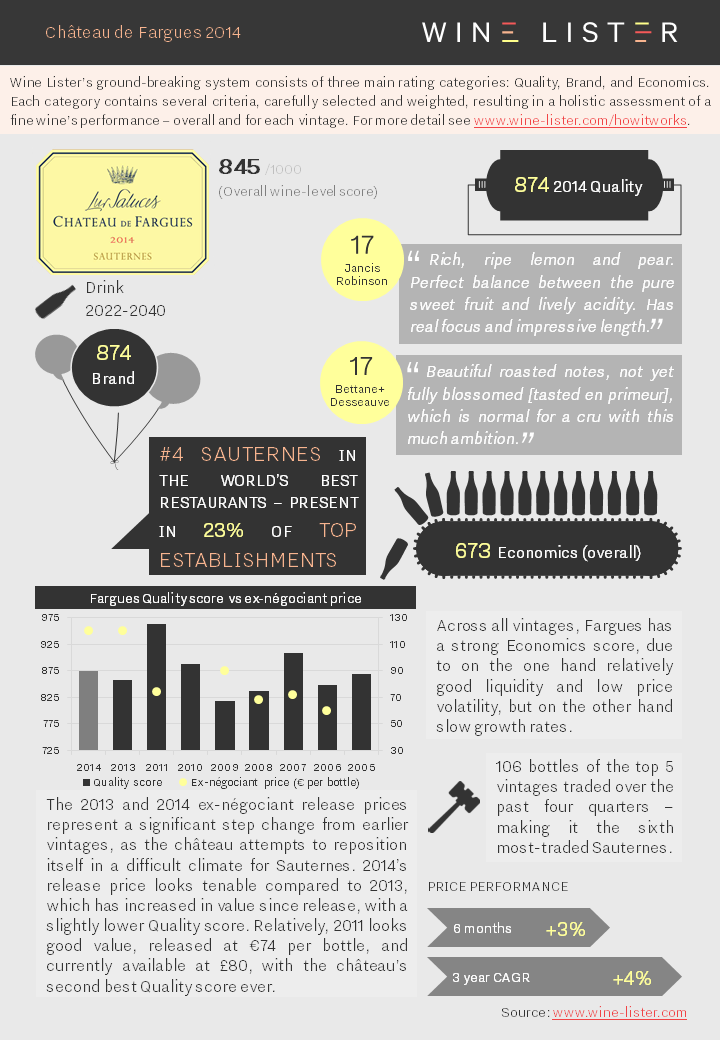
You can download the slide here: Wine Lister Fact Sheet Fargues 2014
Analysis of Les Forts de Latour 2010, which has released a second tranche this morning at €175 ex-négociant, up 8% on the initial 2011 en primeur release price (€162):
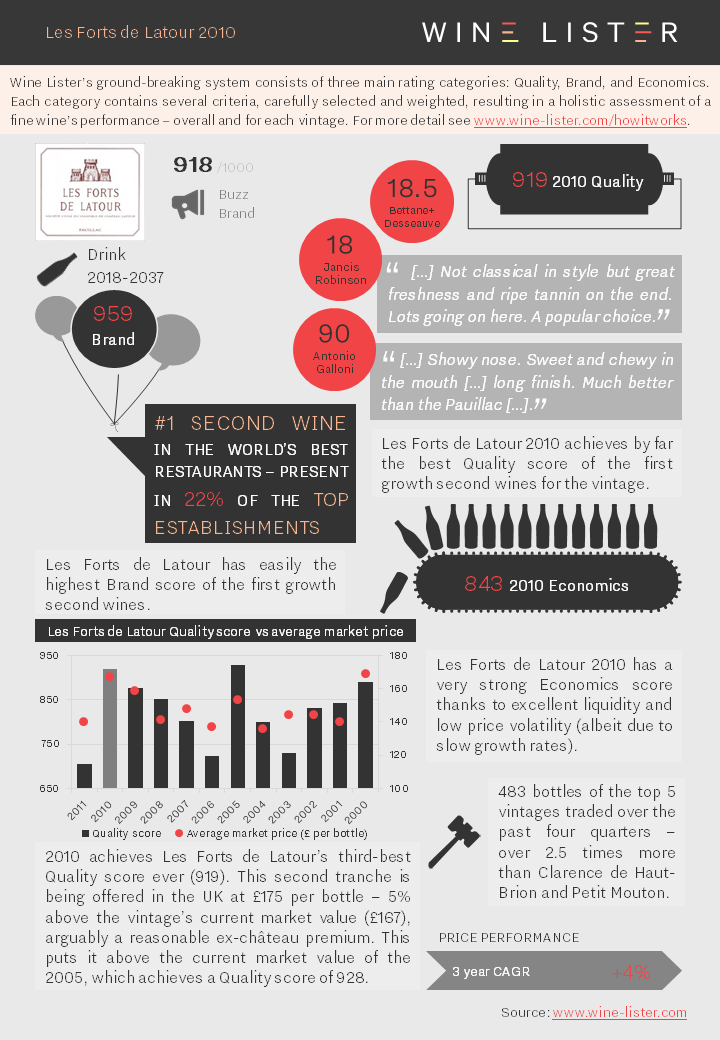
You can download the slide here: Wine Lister Fact Sheet Les Forts de Latour 2010
Analysis of Yquem 2015, which has been released this afternoon at €250 ex-négociant, the same as 2014, with a UK RRP of £264, an increase of 11% on 2014:
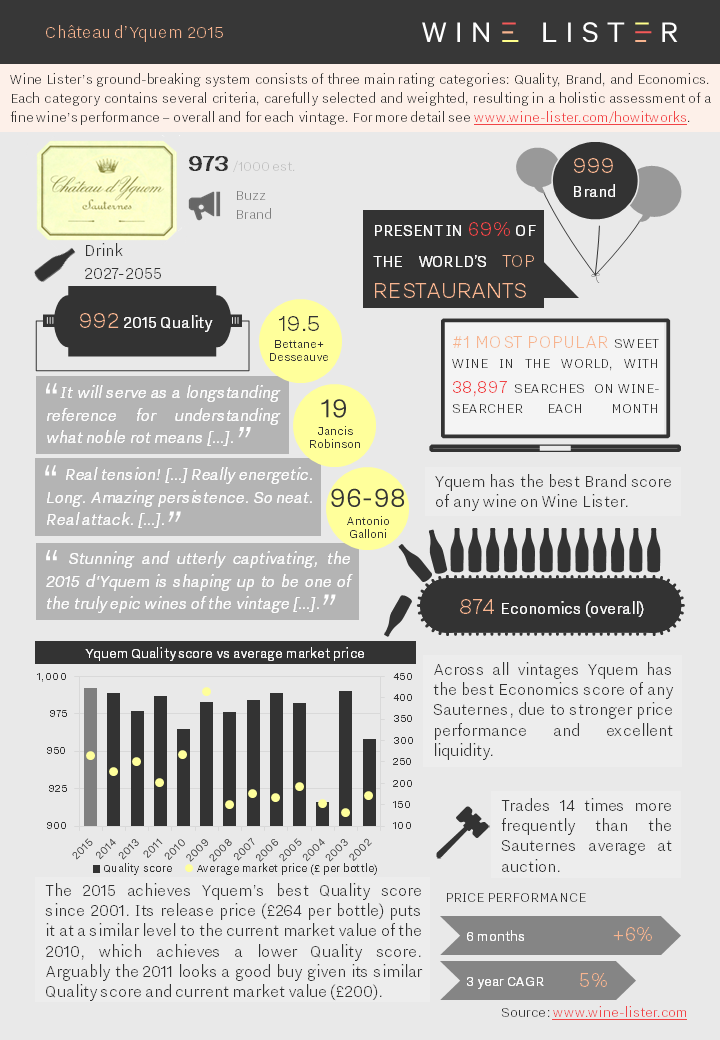
You can download the slide here: Wine Lister Fact Sheet Yquem 2015
Wine Lister’s Quality score measures a wine’s performance across two criteria – critics’ ratings and ageing potential. This week’s Listed section features Wine Lister’s top five Grands Crus Champagnes by Quality score. Each achieving a Quality score of over 950 points, these five Champagnes are amongst the strongest on Wine Lister in the category. The top three also happen to be Buzz Brands.
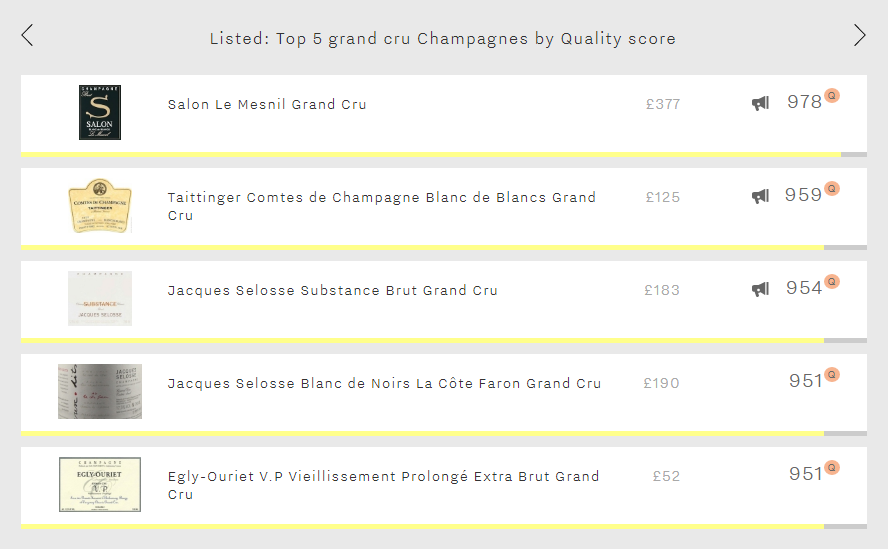
Top of the table is Salon, whose outstanding score of 978 puts it among the 20 best white wines on Wine Lister for quality. With 45,000 bottles produced only in great vintages, and aged at the château until deemed ready to drink, Salon is by far the most expensive of the five. Proving that good things come to those who wait, Salon 2006 was released in July this year, achieving a Quality score of 988, with Antonio Galloni stating that it would be an “utterly compelling Champagne to follow over the next several decades”.
Taittinger Comtes de Champagne Blanc de Blancs Grand Cru is also uniformly highly rated by the critics. With 170,000 bottles produced of the wine each vintage, it has by far the highest average production of the five, making its excellent Quality score all the more impressive.
Proving that outstanding quality is not only found in vintage Grands Crus Champagnes, the last three spots are filled by non-vintage wines. Jacques Selosse produces two of them, with Substance Brut Grand Cru edging out Blanc de Noirs La Côte Faron Grand Cru by three points in terms of quality. Both wines are produced in tiny quantities, with just 1,250 bottles of La Côte Faron leaving the estate each year, and just over double that of Substance.
The fifth spot is filled by Egly-Ouriet V.P Vieillissement Prolongé Extra Brut Grand Cru. 10,000 bottles are produced each year of this wine, whose Quality score (951) significantly outperforms both its Brand score (608) and Economics score (323). Available at nearly a quarter of the price of equally rated Selosse La Côte Faron, it looks excellent value for money.
Here at Wine Lister we’re continually importing and crunching new data to ensure our scores reflect the most up to date picture of each wine’s quality, brand strength, and economic performance.
Economics scores, which comprise five criteria, including six-month price performance and price stability, are updated each week to capture the latest wine price data from our price data partner Wine Owners. Meanwhile Brand scores are updated every month to reflect changes in online search data – how often a wine is searched for on partner site Wine-Searcher.
Now we’ve added a new tool to the site allowing users to track the evolution of every wine’s score over time, identifying how and why the score has changed following each data update.
The interactive chart shows how a wine’s overall Wine Lister score, as well as its category scores, have changed over time, and includes flags to show users what data was updated and when.
For example, using the tool for Giuseppe Quintarelli Alzero, you can see its brand score shoot up in July 2017. The flag tells us this was due to a search statistics update (it turns out LeBron James posted a photo on Instagram of a bottle of the 2007 that he was enjoying):
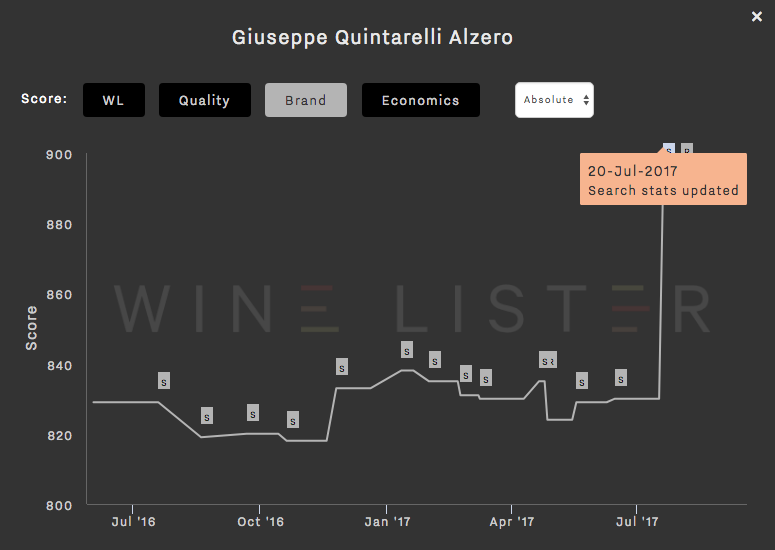
The tool also allows the different category scores to be rebased enabling easy comparison of their relative performance over time. Try it out for yourself by searching any wine and clicking “View score history”, on the wine page, underneath the category score bars:

Vérité Le Désir 2014 has been released this morning with a UK RRP of £300 per bottle. We summarise all the key points below:
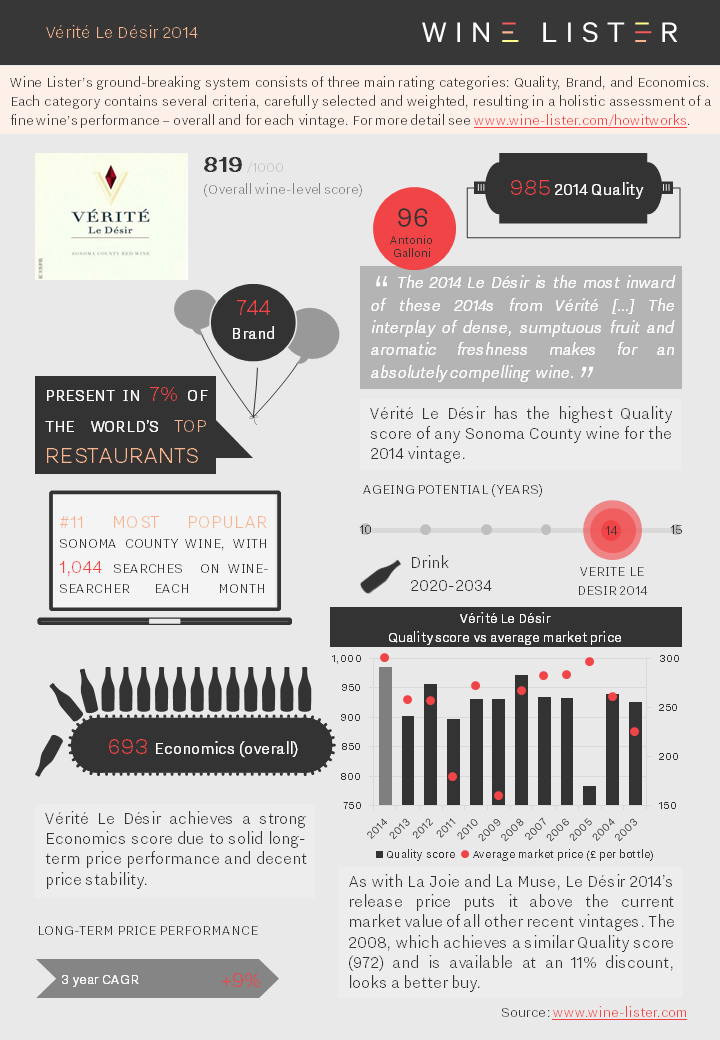
You can download the slide here: Wine Lister Factsheet Vérité Le Désir 2014
Vérité La Muse 2014 has been released this morning with a UK RRP of £300 per bottle. Our factsheet summarises all the key points:
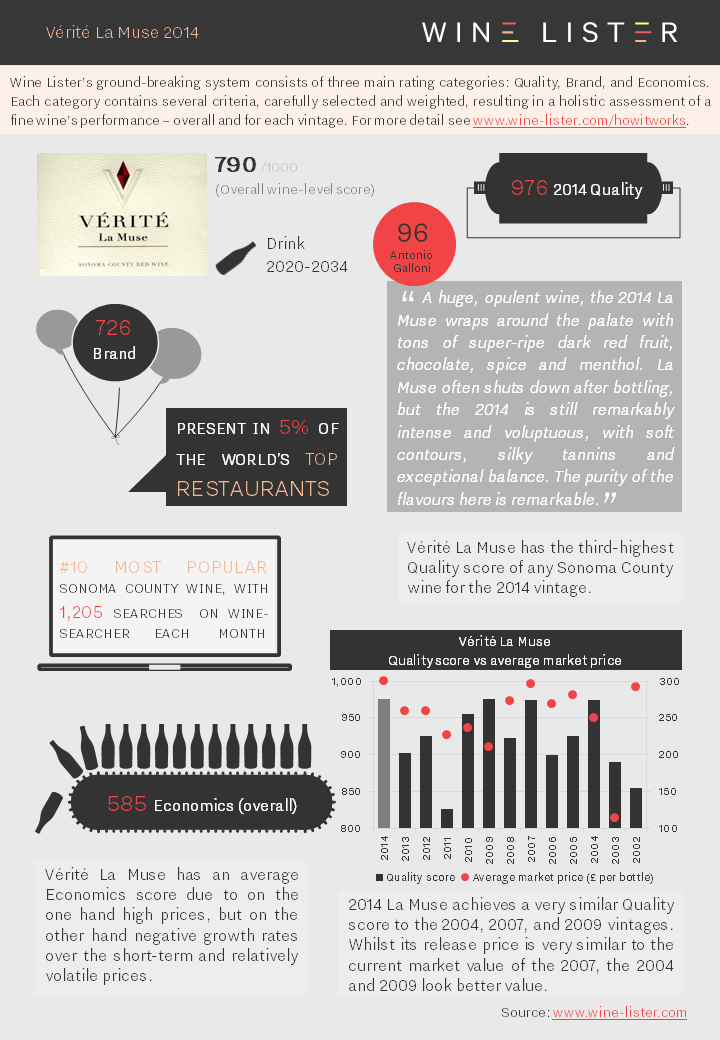
You can download the slide here: Wine Lister Factsheet Vérité La Muse 2014










